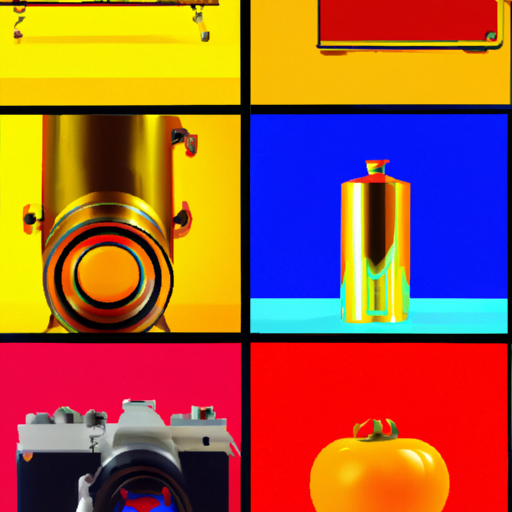
-
Table of Contents
- Using Visual Metaphors to Convey Complex Ideas
- The Power of Visual Metaphors
- Examples of Visual Metaphors
- 1. The “Information Highway” Metaphor
- 2. The “Tree of Knowledge” Metaphor
- 3. The “Jigsaw Puzzle” Metaphor
- Case Studies: Successful Use of Visual Metaphors
- 1. Apple’s “1984” Commercial
- 2. The “Iceberg” Infographic by WWF
- Tips for Using Visual Metaphors Effectively
- Summary
Using Visual Metaphors to Convey Complex Ideas

Communication is a fundamental aspect of human interaction, and conveying complex ideas effectively is a challenge that many individuals and organizations face. One powerful tool that can aid in this process is the use of visual metaphors. Visual metaphors provide a way to simplify complex concepts and make them more accessible to a wider audience. In this article, we will explore the benefits of using visual metaphors and provide examples of how they can be effectively employed.
The Power of Visual Metaphors
Visual metaphors have the ability to transcend language barriers and tap into the universal language of imagery. They can evoke emotions, create connections, and simplify complex ideas by relating them to familiar concepts. By using visual metaphors, communicators can engage their audience on a deeper level and enhance their understanding of complex ideas.
Research has shown that visual metaphors can significantly improve comprehension and retention of information. A study conducted by the University of California, Berkeley found that participants who were presented with visual metaphors were able to recall information more accurately compared to those who were presented with text-only explanations. This highlights the power of visual metaphors in aiding information processing and memory retention.
Examples of Visual Metaphors
Visual metaphors can take various forms, including illustrations, diagrams, and infographics. Let’s explore some examples of how visual metaphors can be used to convey complex ideas:
1. The “Information Highway” Metaphor
The concept of the internet can be challenging to grasp for individuals who are not familiar with the technical aspects of computer networks. However, by using the visual metaphor of an “information highway,” the internet can be represented as a road system with data flowing through it. This metaphor simplifies the idea of the internet and makes it more relatable to a wider audience.
2. The “Tree of Knowledge” Metaphor
When explaining the concept of knowledge and learning, the visual metaphor of a “tree of knowledge” can be employed. This metaphor represents knowledge as a tree with branches representing different fields of study and leaves symbolizing individual pieces of information. By using this metaphor, complex ideas about knowledge can be simplified and made more accessible.
3. The “Jigsaw Puzzle” Metaphor
Complex problem-solving can be challenging to explain, but the visual metaphor of a “jigsaw puzzle” can help make it more understandable. By representing a problem as a puzzle, with each piece representing a different aspect or solution, the metaphor provides a visual representation of the problem-solving process. This can aid in comprehension and help individuals approach complex problems more effectively.
Case Studies: Successful Use of Visual Metaphors
Several organizations have successfully utilized visual metaphors to convey complex ideas and engage their audience. Let’s examine a few case studies:
1. Apple’s “1984” Commercial
In 1984, Apple released a groundbreaking commercial during the Super Bowl that used the visual metaphor of George Orwell’s novel “1984” to introduce their new Macintosh computer. The commercial depicted a dystopian society controlled by a Big Brother figure, representing IBM, and a young woman running in to smash the status quo with the Macintosh. This visual metaphor effectively conveyed Apple’s message of challenging the established order and empowering individuals through technology.
2. The “Iceberg” Infographic by WWF
The World Wildlife Fund (WWF) created an infographic that used the visual metaphor of an iceberg to raise awareness about the impact of climate change. The infographic depicted the visible portion of the iceberg as the immediate effects of climate change, such as melting ice caps, while the larger, submerged portion represented the long-term consequences, such as rising sea levels. This visual metaphor effectively communicated the urgency and interconnectedness of climate change issues.
Tips for Using Visual Metaphors Effectively
When using visual metaphors to convey complex ideas, it is important to keep a few key tips in mind:
- Choose metaphors that are familiar to your target audience.
- Ensure that the metaphor aligns with the message you want to convey.
- Use clear and visually appealing visuals to support the metaphor.
- Keep the metaphor consistent throughout your communication.
- Test the effectiveness of the metaphor with a sample audience before finalizing it.
Summary
Visual metaphors are a powerful tool for conveying complex ideas in a simplified and engaging manner. They tap into the universal language of imagery and enhance comprehension and retention of information. By using visual metaphors, communicators can bridge the gap between complex concepts and their audience, making information more accessible and memorable. When employing visual metaphors, it is important to choose metaphors that are familiar to the target audience, align with the intended message, and are visually appealing. By following these guidelines, communicators can effectively leverage visual metaphors to convey complex ideas and engage their audience.
